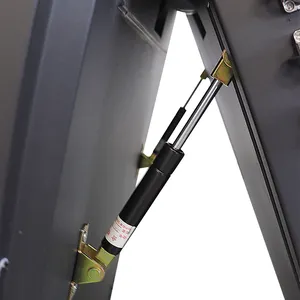
43 Inch Movable Portable Foldable AG Digital Signage Advertising Kiosk Digital Lcd Poster Free Standing Led Display Indoor IP65


Wholesale Rgb Video Wall Ground Support Outdoor Pantallas Transparent Screens Display Board Tv Backpack Led





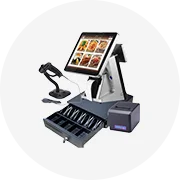
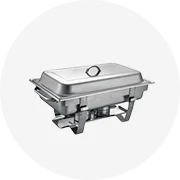
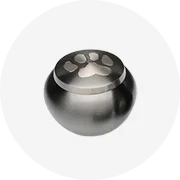
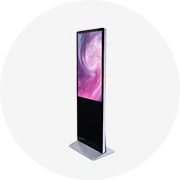
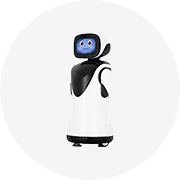
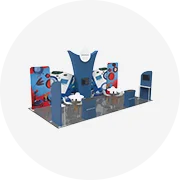
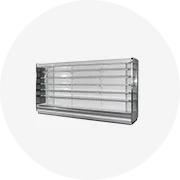
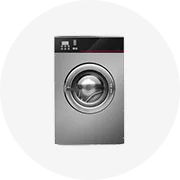
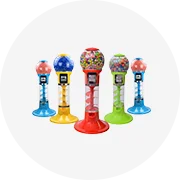
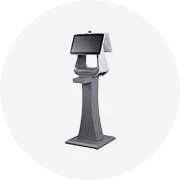
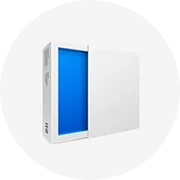

In an age where the average consumer is bombarded with countless advertisements daily, standing out is not just an advantage—it's a necessity. Enter LED scrolling text displays, a game-changer in the realm of dynamic advertising. These vibrant, energy-efficient displays offer a versatile platform for businesses to broadcast their message in real-time, with the flexibility to adapt content instantaneously to the ever-changing market demands. From bustling city centers to quiet shop fronts, LED scrolling text displays are revolutionizing how businesses communicate with potential customers, ensuring their message is not just seen, but remembered.

LED scrolling text displays offer a dynamic way to convey information and advertising content. These displays are not limited to static text but can showcase logos, a variety of colors, high-resolution graphics, and special fonts. Their flexibility allows for frequent and efficient message updates, making them suitable for displaying a wide range of information, from transit updates to news headlines and social media feeds.
The ability to control and update these displays remotely enhances their convenience, allowing for the management of multiple signs and the swift dissemination of urgent announcements. The visual appeal of digital roller signs adds a professional touch to any setting, and their adaptability ensures they remain clear and legible in various environments.
Beyond functionality, LED scrolling displays are also an effective tool for advertising. They can capture attention with moving text and colorful displays, presenting marketing messages in a way that static signs cannot. This capability to display multiple messages in succession not only engages viewers but also opens up potential for increased advertising revenue.
Energy efficiency is another significant benefit, as LED technology focuses on light production rather than heat, leading to lower electricity consumption. This efficiency translates into cost savings over time, making LED scrolling displays a smart investment for businesses looking to enhance communication and advertising strategies.

Alibaba.com showcases a diverse range of LED scrolling text displays suitable for various applications. Among the offerings, you can find standalone LED letters, which come in sizes ranging from 3ft to 5ft, designed to light up and capture attention. Waterproof full-color LED signs are also available, featuring scrolling text capabilities, ideal for outdoor environments where durability against the elements is crucial.
For more dynamic advertising needs, the site lists outdoor LED full-color modules, which are suitable for high-impact visuals in settings like subways and shopping malls. Additionally, there are specialized options like the LED display panels, which are versatile enough for both trade show exhibitions and indoor advertising, offering front access for ease of maintenance.
Customization is a key feature, with products like the custom 7-segment LED display modules tailored for home appliances, and programmable LED scrolling signs that allow for bespoke messaging in window displays or as channel letters. For mobile advertising, scrolling car LED display signs are available in various pixel densities, including P2.5, P3, and P5, designed to mount on vehicles for on-the-go messaging.
Lastly, Alibaba.com provides flexible and programmable options such as app-controlled LED sign boards and ultra-thin soft LED panels for rear window advertising. These are complemented by wireless WiFi-enabled LED scrolling message boards, which offer remote content management for outdoor digital displays, and portable mini car LED signs for targeted messaging on the move.
Indoor LED displays are typically utilized in environments shielded from direct sunlight, such as bank counters or supermarket promotion boards. These displays range in size and are characterized by a high density of luminous spots, which results in a detailed and vibrant display, albeit with lower brightness compared to outdoor displays. Outdoor LED displays, on the other hand, are designed to be visible even in bright sunlight, featuring high brightness and larger screen sizes. They are built to withstand elements like wind, rain, and are waterproof, making them suitable for large-scale advertising displays that often require more complex maintenance.
Semi-outdoor LED displays find their place in locations such as store fronts, where they can operate without direct sunlight. They bridge the gap between indoor and outdoor displays with a pixel size that allows for high brightness and visibility. These displays are typically well-sealed and installed under protective overhangs or within window recesses to shield them from weather conditions.
The distinction between indoor and outdoor LED displays can be discerned through their appearance, with outdoor displays having larger screens and higher brightness to remain visible in direct sunlight. While indoor displays may not require the robust construction of outdoor displays, they offer high-definition visuals suitable for closer viewing distances within indoor settings.
Alibaba offers tailored LED display solutions, catering to the unique demands of various projects. Whether it's for distinctive architectural designs, interactive experiences, or adapting to existing structures, their capability to customize is evident. They focus on creating LED displays that align with the specific requirements of a project, considering factors such as installation area, event nature, and audience.
The design team assists clients in selecting the appropriate LED screen type, size, shape, and pixel pitch to fulfill their display goals, based on the client's brief. Their LED screens are not only flexible in terms of physical design but also in functionality, capable of being bent into custom shapes like company logos or immersive domes, which can enhance customer interest and potentially increase business profitability.
In operational settings such as transportation hubs and places of worship, where clear and frequent announcements are vital, custom LED screens prove to be essential. They can be tailored to operate in unison, ensuring coordinated information dissemination with a pixel pitch that guarantees clarity and readability for announcements.

High-quality LED scrolling text displays are characterized by several key features that ensure their effectiveness and longevity. Flatness is crucial, with a surface deviation of less than ±1mm to prevent image distortion and maintain visibility from various angles. Brightness levels are essential, with indoor displays requiring over 800cd/m² and outdoor displays exceeding 1500cd/m² to ensure clarity under different lighting conditions. The viewing angle, influenced by LED die packaging, should be wide to accommodate a larger audience.
The white balance effect is a critical indicator, with a precise ratio of red, green, and blue to produce pure white, and any deviation can result in color imbalance. Color restoration is also important for the realism of the images displayed. The presence of mosaic patterns or dead points, caused by poor connector quality or LED die, respectively, can indicate lower quality. Color blocks, indicating poor color transition between modules, are often the result of subpar control systems or low scanning frequencies.
Additionally, the wavelength accuracy, which affects color purity and consistency, can be visually inspected by checking for color tints in white and standard colors in red, green, and blue displays. Power consumption is another factor, with efficient displays consuming less energy. The refresh rate, important for preventing image flickering and ensuring camera compatibility, should be above 300Hz for the human eye and above 600Hz for camera recordings. Contrast ratio impacts visual clarity, with higher contrast providing sharper images. Lastly, for indoor small-spacing LED displays, low brightness coupled with high gray levels is essential to prevent quality loss at reduced brightness levels.
The visibility of content on LED scrolling text displays is greatly influenced by their brightness, which is a critical factor for both indoor and outdoor settings. Brightness levels are measured in nits, with outdoor displays requiring higher nit values to ensure readability in direct sunlight. For instance, an outdoor LED display may need around 5500 nits when facing direct sunlight, while shaded areas might only require about 4000 nits. Seasonal changes also affect these requirements, with summer demanding higher brightness due to longer daylight hours.
Indoor LED scrolling text displays, however, have different brightness needs, typically ranging from 800 to 1500 nits to avoid discomfort to viewers. The brightness of these displays is essential for maintaining clear visibility and ensuring that the scrolling text captures the attention of the audience effectively. Furthermore, the ability to adjust brightness automatically with light sensors adds to the adaptability of LED displays, allowing for optimal visibility under varying lighting conditions.
LED displays employ techniques such as modulating pulse width and adjusting current to change brightness levels. This is crucial for achieving the desired visibility and legibility of the scrolling text, which is paramount for effective communication and advertising. The right brightness ensures that the message is not only seen but also visually impactful, making LED scrolling text displays a versatile tool for dynamic advertising.
The durability of an LED scrolling text display is influenced by several factors beyond the diodes themselves. Heat is a primary contributor to diode degradation, with increased brightness leading to higher temperatures. The display's environment plays a role too, as ambient temperatures can accelerate wear. For instance, displays in hotter climates may experience faster degradation. Conversely, cooler environments might extend a display's life.
The power supply's quality is also crucial, as it affects how hard the diodes are driven, impacting the overall lifespan of the screen. Other components, like fans and electrical parts, have their own life expectancies that contribute to the system's durability. Mechanical parts such as fans can fail, and electrical components, much like those in a computer, do not last indefinitely.
The construction and design of the LED display unit are significant as well. Effective cooling mechanisms and designs that allow for proper heat dissipation are essential to prevent thermal stress, which can shorten the life of the display. The circuit boards and other parts release heat during operation, and without a design that facilitates heat escape, the longevity of the display can be compromised.
A crucial aspect of LED scrolling text displays is the ease of programming and content management, which is essential for maintaining an effective and dynamic advertising strategy. Content management systems (CMS) for digital signage, including LED displays, typically offer user-friendly dashboards that allow for straightforward uploading, editing, and scheduling of content. Advanced CMS options integrate design tools and templates, enabling the creation of engaging text messages directly within the software. Additionally, these systems often support real-time content updates and scheduling, ensuring that messages are timely and relevant without the need for constant manual intervention.
The ability to manage the sequence and duration of messages is another feature of sophisticated CMS, allowing for precise control over how and when content is displayed. This can be particularly useful for businesses that want to highlight specific promotions or information at certain times of the day. Furthermore, some CMS solutions offer emergency alert features, which can override existing content to provide critical information swiftly, enhancing the utility of LED scrolling text displays beyond mere advertising.
Digital moving signage, including LED scrolling text displays, offers significant advantages for dynamic advertising. These modern solutions provide greater flexibility and customization compared to traditional signage. Businesses can create branded color schemes, incorporate logos, specific fonts, and high-resolution graphics, and even integrate social media content seamlessly.
The ease of updating content on digital moving signage stands out as a key advantage. Unlike traditional signs that may require time-consuming manual updates, digital displays can be managed remotely, allowing for quick and efficient content changes. This scalability ensures that messaging remains current and relevant, which is crucial for effective advertising.
Digital moving signage also delivers professional and memorable messaging that can enhance customer engagement. The ability to display dynamic content such as videos and real-time updates not only attracts attention but also provides clear and up-to-date information, which is essential in various settings, from retail to education.
Furthermore, the impact of digital signage on consumer behavior is notable. Retail spaces report significant increases in purchases following exposure to digital signage, while other sectors have seen improvements in safety and productivity. These results highlight the effectiveness of LED scrolling text displays in capturing customer interest and driving action.
In summary, the adoption of LED scrolling text displays for advertising offers enhanced engagement, cost-effectiveness, and energy efficiency. The dynamic nature of digital content management allows for a more impactful advertising strategy that can adapt to the ever-changing business environment.
Interactive digital signage transforms conventional displays into engaging experiences. By incorporating touch and gesture interactivity, these solutions captivate customers, encouraging them to interact with the content. Interactive campaigns allow shoppers to navigate through products, select items, and create a wish list. This not only garners attention but also extends the campaign's reach as users share their lists online and via mobile.
The interactive applications used in digital signage are designed with animated interfaces that respond to natural touch or gesture, enhancing the user experience. These interfaces can be configured for different orientations, adding to the versatility of the displays. The content, which can include text, images, videos, and animations, is stored on the device, ensuring quick access and reliability, even without an internet connection. This approach to digital signage ensures that customer engagement is not hampered by technical delays.
Moreover, the centralised content management system (CMS) allows for a dynamic display of various media, from product tiles with QR codes to interactive maps and digital brochures. This level of interactivity not only engages customers but also provides them with a wealth of information at their fingertips, making the shopping experience both informative and enjoyable.
LED signage stands out for its energy efficiency, consuming significantly less electricity compared to traditional lighting solutions like halogen, incandescent, or fluorescent lights. This reduction in energy use translates into direct cost savings. LEDs emit light directionally, which means they provide the same level of brightness as larger, traditional bulbs while using less energy, avoiding waste. Furthermore, unlike older display technologies that generate a substantial amount of heat, LEDs produce minimal heat, enhancing their energy efficiency and reducing the likelihood of burnout.
The sustainability of LED displays is further augmented by their longevity. LEDs have an impressive lifespan, often outlasting other types of digital displays by a considerable margin. This extended lifespan means fewer replacements and, consequently, less waste. Additionally, the minimal maintenance required for LED displays not only provides cost savings but also minimizes workflow disruptions and environmental impact. These factors combined make LED scrolling text displays a smart choice for businesses looking to advertise in an energy-efficient and cost-effective manner.
In conclusion, LED scrolling text displays represent a significant leap forward in advertising technology. They offer unparalleled flexibility, visibility, and interactivity that traditional signage simply cannot match. With the ability to customize messages, integrate with social media, and manage content remotely, businesses can engage with their audience more effectively than ever before. The cost savings and energy efficiency of LED technology further underscore its value as a smart investment for forward-thinking advertisers. As we've seen, whether it's through enhancing customer engagement, ensuring content is timely and relevant, or simply cutting down on energy costs, the benefits of LED scrolling text displays are clear. They are not just tools for advertising but catalysts for creating deeper connections with consumers in a digital age.